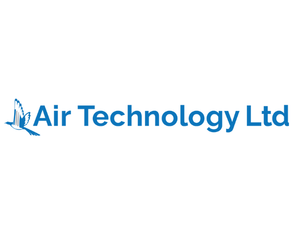
During my decade working in wastewater various numbers have been shown to me about how energy intensive wastewater treatment is. No matter which number is discussed there seems to be one thing of which there is little doubt- it is very very high. With this understanding there has been a concerted push within the industry's supply chain to push energy and efficiency as a key reason to purchase new capital equipment for marginal gains.
Whilst a 10% saving on blower efficiency or 3% improvement in oxygen transfer can be quickly and easily quantified it can be much more confusing when we turn our attention to ASP control. It is easy to find advocates who will tell you how ASP control is important and has huge potential to benefit the efficiency and therefore energy use of a plant however when it comes to implementation it can be messy. The 3 key reasons I see for this come from:
So how do we overcome these challenges? From my experience I would recommend progressing through 3 phases.
Firstly, is the groundwork- the data collection and testing needed to ensure an understanding of all the control elements is known. It is important that this stage is done correctly and the data collected can be relied on. Whilst historic data is always nice to have, unless you are 100% certain in your condition monitoring, instrument maintenance and testing regime a fresh comprehensive survey of all elements should be best practice. This stage not only provides us with the data needed to design a control system but also allows accurate savings to be calculated for capital investment decisions to be made confidently.
Secondly, is design and implementation to suit the site. At Air Technology we refer to the control in levels- starting from basic DO on off control at Level 1 up to advanced ammonia load factor control at Level 7 with lots of instrumentation. This design work may be done internally by the end user or from a plethora of suppliers who may go on to specify a standalone control PLC or control that can be run natively on the end users own existing or upgraded system. For more advanced control systems the preferred option may involve ammonia monitoring as a control element which means more choices will need to be made as to which instruments to use. The two most common are cheaper but more maintenance heavy and less robust Ion-Selective Electrode technology (ISE) or more expensive Analyser technology- both are available from various suppliers into the industry. For smaller sites it may be that ISE provides the savings required for a successful payback and Capex budget request at the expense of more Opex in the long run. For even smaller sites then the payback of these advanced systems may not be there at all however other savings should not be ignored. What Air Technology refers to as a level 5 control system can still get large gains in efficiency via Variable Pressure Control. VPC works by changing the air main pressure depending on how the plant is loaded- most likely possible purely from new PLC code without any additional instrumentation- and uses blower and operational pressure data gained during phase 1. Often this is a cost effective system that may convince the final bill payer where other systems may struggle. Whichever control system is used they all require one final step before benefits can be achieved.
Phase 3 is where it all comes together via a comprehensive commissioning and tuning regime. It is important that commissioning covers all elements under all circumstances and also tests fail points and any fall backs put in place. Once confidence in control is established it is time to fine tune the system. This may be via PID tuning but it can also be by tweaking setpoints to improve compliance or gain maximum efficiency savings at periods of low load. Whatever the aim it is important that these outcomes are clearly understood. The temptation to not see the woods for the trees and narrowly focus on a single loop or setpoint whilst ignoring the plant as a whole can be a difficult one to ignore. Finally, once tuned ensure that a comprehensive understanding is passed to whomever will be operating the plant. Operator hesitancy and mistrust can undo all the hard work so do not underestimate this step.
So you’re done. Right? Savings banked and on to the next site. Well not so fast. Sites need to be checked every year or two to ensure something has not changed to throw your assumptions out of kilter. A new housing estate or the closure of a nearby factory can throw your commissioned design out the window so make sure to return and assess and retune as needed. Finally, it would be remiss of me not to mention all the new technology that is coming around the corner, from AI and machine learning systems that can run a whole site not just the ASP to advanced systems being developed to look at N20, Nitrite and Nitrate and ensure low emissions. The humble ASP control system may have long been ignored or forgotten but by getting your sites onto a solid foundation you can make savings now and be ready for all these new developments as they come around the corner.


